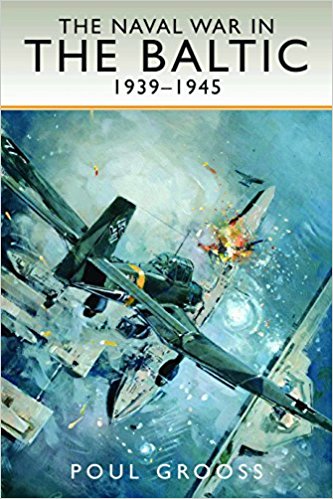Most naval histories of World War II say little about the Baltic, so this comprehensive book by Poul Grooss, published in Denmark in 2014 and translated into English in 2017, is a welcome and overdue reminder of its importance.
The opening shots of the war were fired in Danzig by the old German battleship Schleswig-Holstein, and German naval activity in the final weeks of the war was mainly in the Baltic. As the Baltic was essential to Germany as a safe area for training U-boat crews, and for working up boats, they went to great lengths to prevent Allied submarines entering the area.

Hardback 416pp RRP: 39.60 + p/h
After the invasion of the Soviet Union in July 1941, German emphasis shifted to the Eastern Baltic, with surface ships supporting their attacking forces by shore bombardment, and naval and air forces making an initially largely successful attempt to restrict Soviet submarines to their bases. Although the German air force bombed and sank the Soviet battleship Marat at Kronstadt, where she settled on the harbour bottom and remained as a gun platform firing in support of Leningrad, the main weapon used throughout the Baltic was the mine, which was used by both sides in enormous numbers. Seafarers of a certain age will remember the NEMEDRI (Northern Europe and Mediterranean Routing Instructions) that prescribed routes supposedly safe from mines into the 1970s.
War in the Baltic was complex and involved more than Germany and the Soviet Union. The Kattegat and the Skagerrak were used during the German invasion of Norway, became the scene of clandestine traffic to and from Sweden, and of extensive mining operations (“gardening”) by the RAF. Finland had fought a defensive Winter War against the Soviet Union and after the launch of Operation Barbarossa, continued the war allied with Germany. Sweden, with German occupied Norway on one border and German allied Finland on the other, had to act carefully to remain neutral. Latvia, Lithuania, and Estonia, which had been occupied by the Soviet Union in 1939, fought on the German side, for the best of reasons, and suffered accordingly.
Poul Grooss, who is chairman of the Naval History Society of the Royal Danish Naval Museum and a retired captain Royal Danish Navy, has included several short sections on technical subjects such as ‘Submarine Warfare’ and ‘Naval Artillery during the War’ to assist general readers.
The background to the naval war is introduced by geography, history, and political and naval developments before World War II. The war itself is developed chronologically: the attack on Poland, the Baltic Region after the Polish campaign, and the attack on the Soviet Union. Meticulously researched and supported by good maps, and by numerous photographs most readers will not have seen previously, this is an excellent book that makes an important contribution to the naval history of the Second World War.
Reviewed for RUSIV by Roger Buxton, September 2017
Contact Royal United Services Institute about this article.






